With women reacting more negatively to President Trump than men, the gender gap in 2020 is growing.
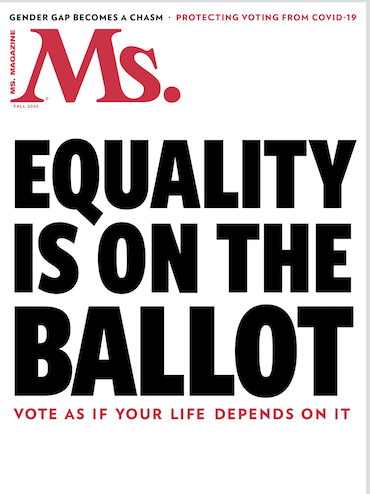
This article originally appeared in the Fall 2020 issue of Ms.
Become a member today to read more reporting like this in print and through our app.
In the past four years, Americans have experienced an endless series of large-scale events and shocks to our political system.
The massive January 2017 Women’s Marches brought together approximately 1 million people in the nation’s capital and 5.6 million worldwide.
In May of that year, President Trump fired FBI Director James Comey, resulting in the investigation by special counsel Robert Mueller and contentious congressional hearings.
In 2019, Trump’s call with the president of Ukraine led to impeachment hearings—the third impeachment of a sitting president in U.S. history—and Trump’s ultimate acquittal by the Senate.
Within weeks, Americans began to become aware of the magnitude of the coronavirus pandemic. Just a few short months later, the killing of George Floyd by the Minneapolis police led to massive demonstrations for racial justice in cities and small towns across the country.
In the middle of all this were the 2018 midterm elections, with women’s votes propelling a 41-seat gain for House Democrats and Nancy Pelosi’s comeback as speaker of the House.
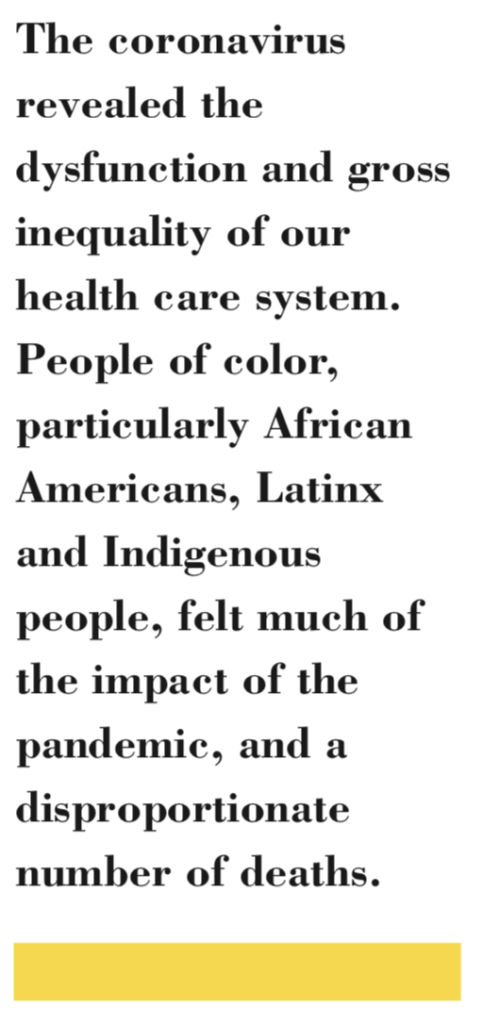
These cataclysmic events have shaped voter attitudes and preferences. In each of these cases, women appear to have reacted more quickly and more negatively to Trump than men have. A gender gap has emerged across most approval ratings, presidential preferences and top issues. And the disparity is only growing.
COVID-19
2020 is an election year like no other for many reasons, but two concerns among voters stand out: COVID-19 and the intense and broad focus on racial justice. These—together with the increasing importance of the suburban women’s vote—are a frame for understanding how the 2020 presidential race has been developing.
The coronavirus revealed the dysfunction and gross inequality of our health care system. People of color, particularly African Americans, Latinx and Indigenous people, felt much of the impact of the pandemic, and a disproportionate number of deaths.
Disapproval of Trump’s response to the coronavirus emerged in late March and early April, as the devastation the pandemic was causing dominated TV coverage. This disapproval increased sharply as the crisis wore on.
Fox News polling shows overall disapproval of Trump’s handling of the pandemic going from about 48 percent in March and April to 56 percent in July, with a clear gender gap in disapproval: In April, when the overall rating was still slightly positive, a majority of women (52 percent) disapproved of Trump’s handling of the crisis, compared to only 43 percent disapproval among men. Women’s disapproval increased to 62 percent in July and, at press time, sits at 56 percent.

Disapproval of the president himself grew as many believed that he minimized the dangers of the virus. The approval/disapproval graphs for Trump as president and Trump’s handling of the pandemic are not merely similar—they are virtually the same graph.
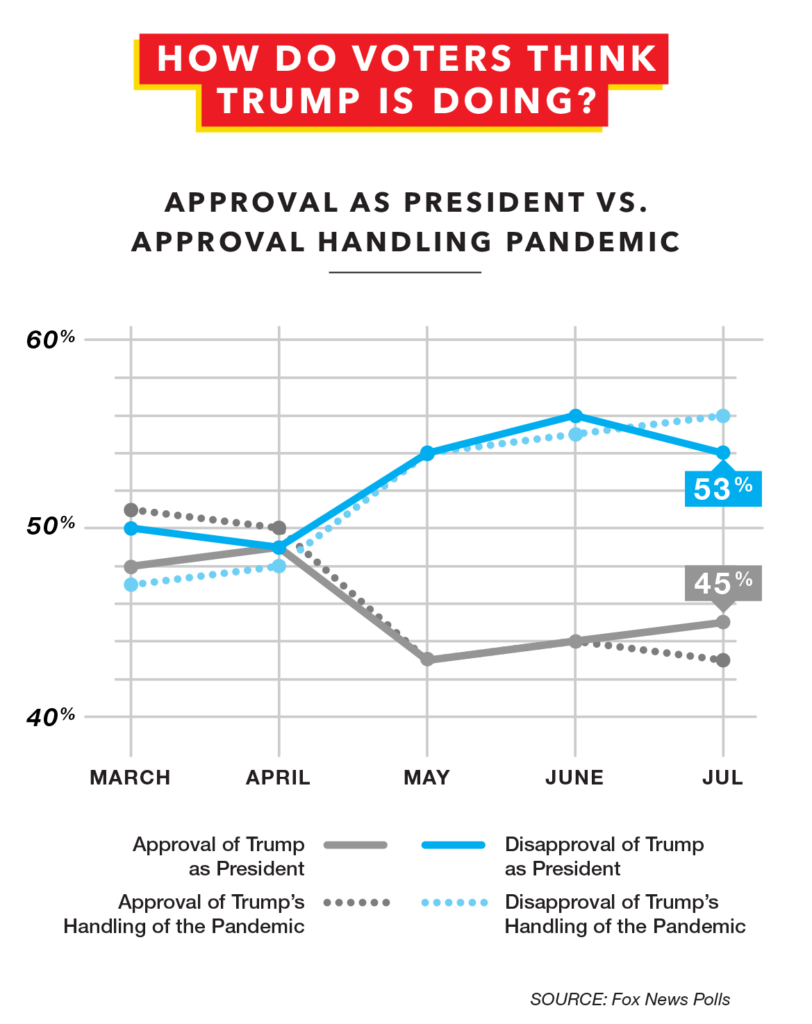
As CNN reported in July, there are signs that even Trump’s base is leaving him on the issue of the virus. Before the pandemic, his approval rating among Republicans had never been lower than 85 percent, and it occasionally hit 90 percent; now the average approval rating among Republicans is less than 80 percent.
Racial Justice
After the police killing of George Floyd on May 25, the Black Lives Matter movement returned to the headlines with massive nationwide protests against racist policing and structural racism in general.
Three-quarters of Americans see racial and ethnic discrimination as a big problem, including 68 percent of men and 83 percent of women, a 15-point gender gap.
Most voters (69 percent) agree that Black people and other minorities do not receive equal treatment at the hands of the criminal justice system (62 percent of men and 75 percent of women, a 13-point gender gap).
A majority of Americans support BLM: A Fox News poll just after Floyd’s killing showed strong approval of Black Lives Matter (67 percent favorable) and almost as strong disapproval of Trump’s handling of race relations (32 percent approve, 61 percent disapprove) and his handling of the protests (31 percent approve, 56 percent disapprove). There were gender gaps of 6 and 5 points, respectively, on Trump’s handling of these issues.
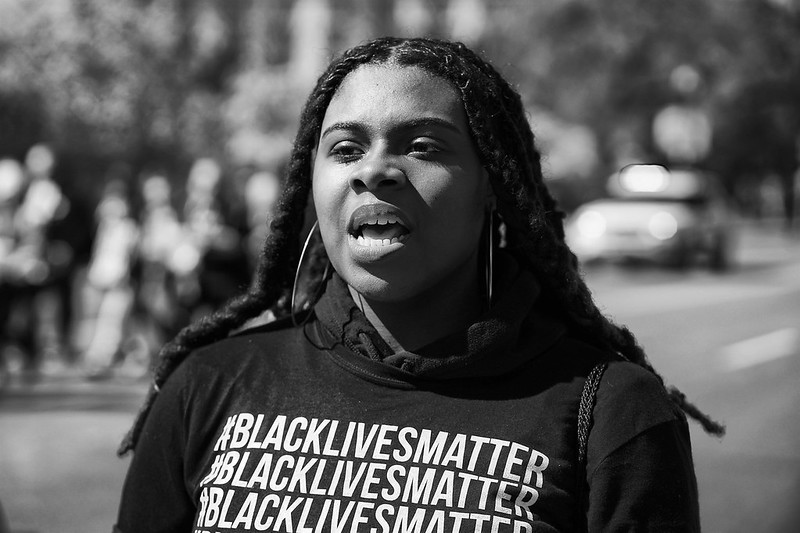
By July, the overall disapproval of Trump’s handling of race relations had abated slightly, although 56 percent still disapproved. The gender gap on disapproval, however, had doubled—to 12 points (62 percent of women disapproved, compared to 50 percent of men). It is women’s attitudes that are largely driving Trump’s disapproval ratings.
Today, the gender gap continues to propel Biden ahead: Trump leads 55 percent to 42 percent among male likely voters, but Biden has a significant advantage—65 percent to 34 percent—advantage among women likely to vote.
(For reference, Trump’s lead among men is very close to the margin he held over Hillary Clinton in 2016, but Biden’s lead among women is more than twice as large as Clinton’s was then.)
The Suburban Women’s Vote
By July, COVID-19 had struck the heartland, ravaging the South and threatening the Midwest. Rural communities were badly hurt. Trump’s numbers were sinking, particularly in the battleground states.
Around this time, Trump declared himself the “president of law and order” and sent federal law enforcement into Portland, Ore., without the state’s or the city’s consent, setting off nightly clashes with demonstrators.
Trump promised in a July speech, “The suburb destruction will end with us,” then tweeted, “The ‘suburban housewife’ will be voting for me. They want safety.”
The message did not land. A July Washington Post/ABC News poll found that Americans trust Joe Biden (50 percent) over Trump (41 percent) to handle crime and safety. Men went for Trump (49 percent) rather than Biden (42 percent).
By contrast, women went for Biden big-time (57 percent, compared to 34 percent for Trump), a 15-point gender gap.
Trump’s message didn’t even play well in the suburbs. According to the Fox poll, 62 percent of suburbanites disapproved of his handling of race relations.
The suburbs, where the majority of Americans live, have become new election battlegrounds—older, denser suburbs outside major cities are where many elections are won or lost. These are no longer monolithic bedroom communities, and the suburbs as a unit are no longer an indivisible part of the Republican base.
This is particularly true of suburban women. The July Fox poll found 62 percent of suburban women disapprove of Trump’s handling of race relations, with 66 percent also having an unfavorable view of Trump and 56 percent having a favorable view of Biden.
In a June Marist poll, the suburbs were more disapproving of Trump and more favorable to Biden than was the country as a whole. Nationwide, the poll found men disapproving of Trump as president by 51 percent, and women by 60 percent (a 9-point gender gap).
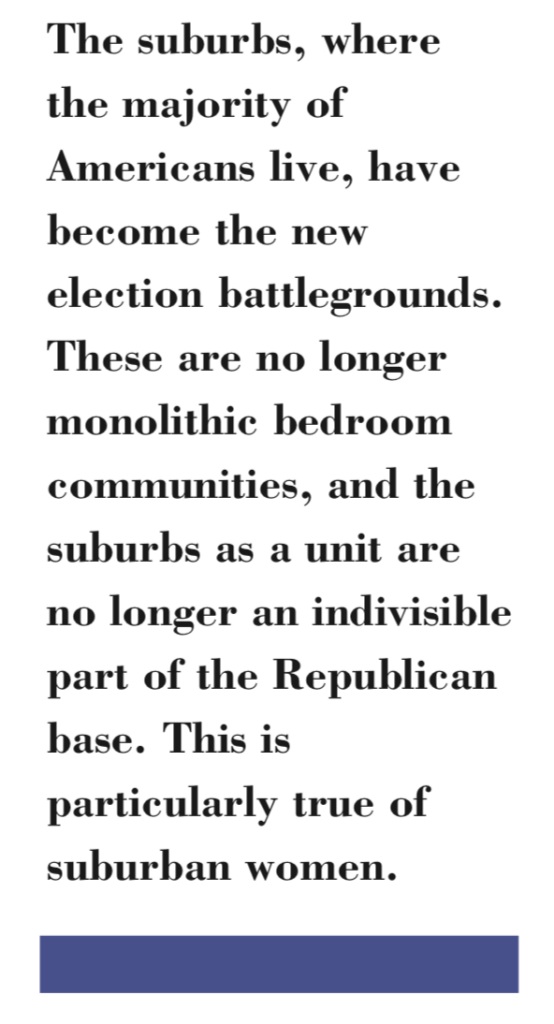
In the suburbs, however, disapproval among men was 55 percent and among women it was 65 percent. There, both the gender gap (10 points) and the disapproval of Trump were greater.
Likewise when it comes to Biden versus Trump: Nationwide, the Marist poll showed Trump leading Biden among men (48 percent to 44 percent) but losing to him among women (38 percent to 56 percent), a 12-point gender gap in favor of Biden. In the suburbs, however, Trump was losing to Biden among both men and women—41 percent to 49 percent among men and 33 percent to 57 percent among women, a gender gap of 8 points.
Keep reading:





